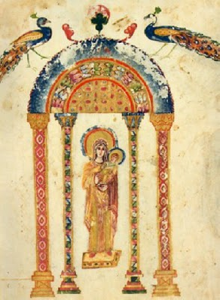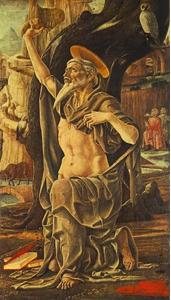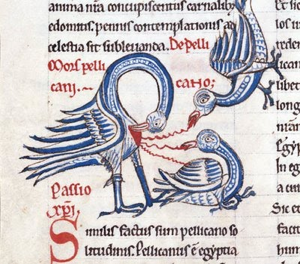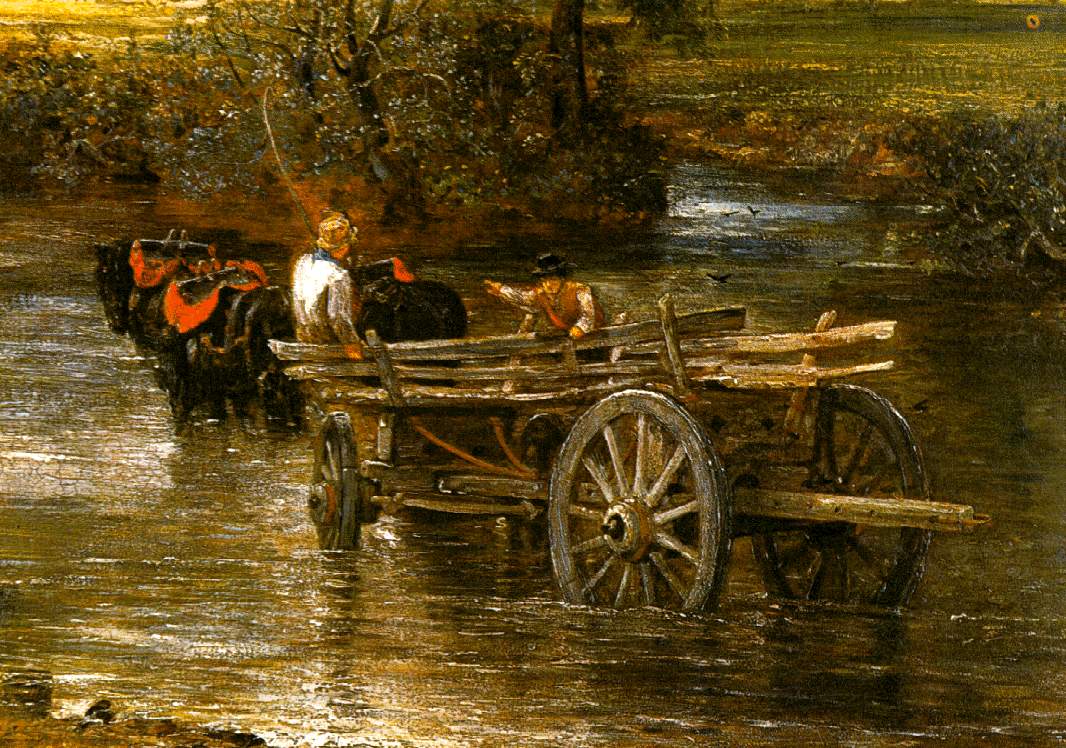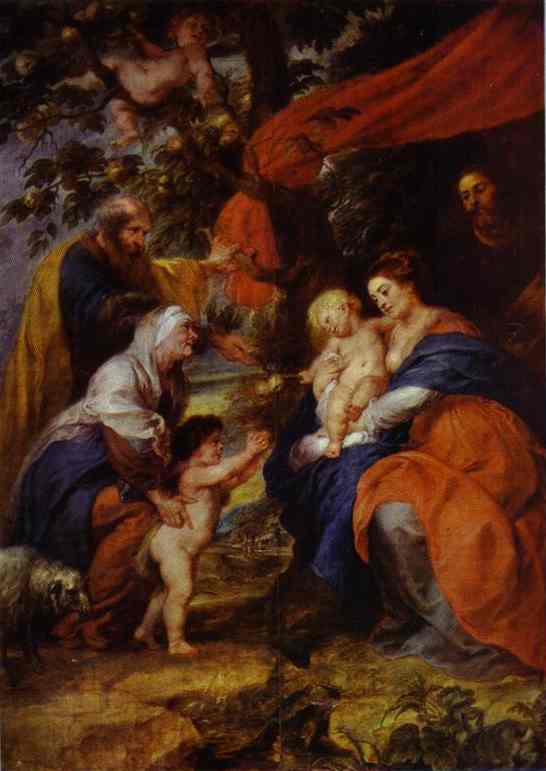Christians take note. Legoland have worked something out here. These children are transported in their imaginations and they love it. The fact that the images are made out of plastic bricks, does not put them off, rather it seems to attract them even more. We may hold our noses at the McDisney aesthetic, but we should look and learn. and consider why, despite that, it is so popular.
Christians Created Abstract Art 2000 Years Before Kandinsky - And Were Better At It!
Sacred number in art: St Matthew’s tells us there are 14 generations from Abraham to David, 14 from David until the Babylonian exile and 14 from the Babylonian exile to Christ. Matthew wrote in Aramaic. In this language, the characters of the alphabet are also used for numbers. This allows for every name to characterized both in letters and numbers. When the letters that comprise the name David are treated as numbers and added together it creates the number 14. This numerical symbolism emphasizes the fact that Christ in a king in the line of David, as prophesied.
Cardinal Virtue - A Suggestion for a New Symbol from the Book of Nature
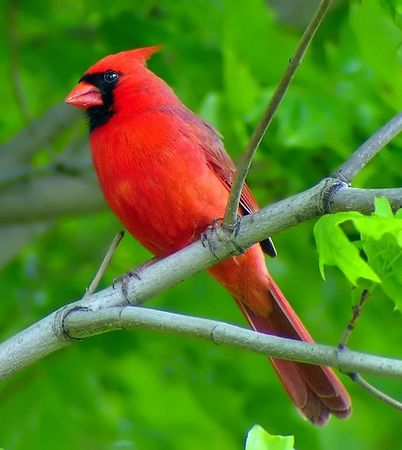 Inspired by Rural New England I have said before how if a tradition is to be a living tradition it should be developing re-applying its core principles so that it speaks of and to each successive generation. Accordingly, we should start to look for symbolism in the light of what we now know about the natural world today. So here’s a challenge to readers. Try to think of examples that could be developed. To my mind, this should have at its root a commonly believed truth about the thing itself so that the symbolism has a natural connection with reality. Also, if the object itself is attractive it will arouse an interest regardless of what it symbolizes. For example, contrary to the belief of late antiquity, the peacock’s flesh does decay and so it is not a good symbol for immortality in today’s world. Nevertheless, the sheer attractiveness of a peacock in mosaics and paintings makes me want to find a way of including it anyway!
So in line with this here is my offering: a regular flash of red in the New England countryside is the male cardinal bird, the name is derived from the comparison to a cardinal’s robes. I was told recently that the cardinal bird interesting in that although it looks very bright when it is in its setting, when you see it in close-up and in isolation it appears relatively drab, given what a flash of colour it is when you see it at a distance. I speculate that the reason for this is that red and green are complementary colours. Red looks redder when it is next to green; just as green looks greener next to red. So the male cardinal bird is more attractive when in its natural setting. As an artist, if I paint a landscape, I always try to put some discreet strokes of red somewhere next to the green if I wish to make the foliage more vibrant.
Inspired by Rural New England I have said before how if a tradition is to be a living tradition it should be developing re-applying its core principles so that it speaks of and to each successive generation. Accordingly, we should start to look for symbolism in the light of what we now know about the natural world today. So here’s a challenge to readers. Try to think of examples that could be developed. To my mind, this should have at its root a commonly believed truth about the thing itself so that the symbolism has a natural connection with reality. Also, if the object itself is attractive it will arouse an interest regardless of what it symbolizes. For example, contrary to the belief of late antiquity, the peacock’s flesh does decay and so it is not a good symbol for immortality in today’s world. Nevertheless, the sheer attractiveness of a peacock in mosaics and paintings makes me want to find a way of including it anyway!
So in line with this here is my offering: a regular flash of red in the New England countryside is the male cardinal bird, the name is derived from the comparison to a cardinal’s robes. I was told recently that the cardinal bird interesting in that although it looks very bright when it is in its setting, when you see it in close-up and in isolation it appears relatively drab, given what a flash of colour it is when you see it at a distance. I speculate that the reason for this is that red and green are complementary colours. Red looks redder when it is next to green; just as green looks greener next to red. So the male cardinal bird is more attractive when in its natural setting. As an artist, if I paint a landscape, I always try to put some discreet strokes of red somewhere next to the green if I wish to make the foliage more vibrant.
Part of what inspired me to become a Catholic was the inspiring vision of the Church that each of us has a unique role to play in contributing to the common good. This is our personal vocation. We are most fully ourselves and so most joyful and most fulfilled when we live this calling. The joy we feel is radiant and will attract curiosity I was lucky 20 years ago in that I was given very good guidance that set me out on a journey to be doing what I have always wanted to do, I have written about this here.
I had always thought of the discovery of this as finding the right shaped hole in the jigsaw so that it helps to complete the picture that is the common good. But in fact this image of the cardinal bird says it so much more clearly. When we in the right role in relation to other and the mystical body of Christ, our own natural setting, just like the cardinal bird we become brighter and more radiant examples of the Faith.
Below: a detail from Constable's The Hay Wain showing a discreet use of red to enhance the greenness of the scene.
The Apple of My Eye - a Leaf from the Book of Nature
 I have written recently about the reading of the book of nature for symbolic meaning. I have recently moved to a new address in Massachussetts. The house is in a rural setting (in what will eventually be the new campus for Thomas More College, a place called Groton). From the kitchen window I can see a commercial apple orchard, and across the field I often see deer and wild birds. So, I thought, what can be read in this particular book of nature? Here are two examples: the first is a traditional one, and most obvious for my New England setting, the apple.
My Dictionary of Saints, Signs and Symbols says that the apple is a symbol for sin when in the hand of Adam or Eve and of salvation when associated with Christ. There is speculation as to why the apple became associated with the forbidden fruit, mentioned in Genesis. My dictionary says that the Latin word for apple and for evil is the same: malum. Most of the paintings that I am aware of that use this as a symbol for salvation do so in the context of either a painting of the Virgin and Child, in which the new Adam returns the apple to the new Eve; or in the Holy Family. In the selection I have shown, I have included below one example of a painting by an anonymous 15th century artist called The Holy Kinship, which shows the extended family of Jesus. In this St Elizabeth hands an apple to the little boy. This might be symbolic, but as with all symbols I have to remember that the symbolism doesn’t rule out a more literal interpretation: a mother giving a treat to her little boy might simply be a charming indication of maternal love.
I have written recently about the reading of the book of nature for symbolic meaning. I have recently moved to a new address in Massachussetts. The house is in a rural setting (in what will eventually be the new campus for Thomas More College, a place called Groton). From the kitchen window I can see a commercial apple orchard, and across the field I often see deer and wild birds. So, I thought, what can be read in this particular book of nature? Here are two examples: the first is a traditional one, and most obvious for my New England setting, the apple.
My Dictionary of Saints, Signs and Symbols says that the apple is a symbol for sin when in the hand of Adam or Eve and of salvation when associated with Christ. There is speculation as to why the apple became associated with the forbidden fruit, mentioned in Genesis. My dictionary says that the Latin word for apple and for evil is the same: malum. Most of the paintings that I am aware of that use this as a symbol for salvation do so in the context of either a painting of the Virgin and Child, in which the new Adam returns the apple to the new Eve; or in the Holy Family. In the selection I have shown, I have included below one example of a painting by an anonymous 15th century artist called The Holy Kinship, which shows the extended family of Jesus. In this St Elizabeth hands an apple to the little boy. This might be symbolic, but as with all symbols I have to remember that the symbolism doesn’t rule out a more literal interpretation: a mother giving a treat to her little boy might simply be a charming indication of maternal love.
Images from top: Gerard David, Flemish 15th century; Stanzione, Italian 16th century; Rubens, Flemish 17th century
The Holy Kinship, German 15th century. St Elizabeth is bottom right.
Pelican Brief – Should We Aim to Revive All Christian Symbols?
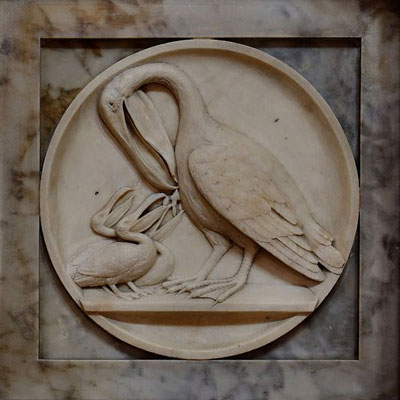 Is there a danger that trying to reestablish traditional Christian symbols in art would sow confusion rather that clarity? Lots of talks and articles about traditional Christian art I see discuss the symbolism of the iconographic content; for example, the meaning of the acacia bush (the immortality of the soul) or the peacock (again, immortality). This is useful if we have a printed (or perhaps for a few of you an original) Old Master in church or a prayer corner as it will enhance our prayer life when contemplating the image. But is this something that we ought to be aiming to reinstate the same symbolism in what we produce today? Should we seek to educate artists to include this symbolic language in their art?
If symbols are meant to communicate and clarify, they should be readily understood by those who see them. This might have been the case when they were introduced – very likely they reflected aspects of the culture at the time – and afterwards when the tradition was still living and so knowledge of this was handed on. But for most it isn’t true now. How many would recognize the characteristics of an acacia bush, never mind what it symbolizes? If you ask someone today who has not been educated in traditional Christian symbolism in art what the peacock means, my guess is that they are more likely to suggest pride, referring to the expression, ‘as proud as peacock’. So the use of the peacock would not clarify, in fact it would do worse than mystify, it might actually mislead. (The reason for the use of the peacock as a symbol of immortality, as I understand it, is the ancient belief that its flesh was incorruptible). So to reestablish this sign language would be a huge task. We would not only have to educate the artists, but also educate everyone for whom the art was intended to read the symbolism. If this is the case, why bother at all, it doesn’t seem to helping very much, and in the end it will always exclude those who are not part of the cognoscenti . This is exactly the opposite of what is desired: for the greater number, it would not draw them into contemplation of the Truth, but push them out.
Is there a danger that trying to reestablish traditional Christian symbols in art would sow confusion rather that clarity? Lots of talks and articles about traditional Christian art I see discuss the symbolism of the iconographic content; for example, the meaning of the acacia bush (the immortality of the soul) or the peacock (again, immortality). This is useful if we have a printed (or perhaps for a few of you an original) Old Master in church or a prayer corner as it will enhance our prayer life when contemplating the image. But is this something that we ought to be aiming to reinstate the same symbolism in what we produce today? Should we seek to educate artists to include this symbolic language in their art?
If symbols are meant to communicate and clarify, they should be readily understood by those who see them. This might have been the case when they were introduced – very likely they reflected aspects of the culture at the time – and afterwards when the tradition was still living and so knowledge of this was handed on. But for most it isn’t true now. How many would recognize the characteristics of an acacia bush, never mind what it symbolizes? If you ask someone today who has not been educated in traditional Christian symbolism in art what the peacock means, my guess is that they are more likely to suggest pride, referring to the expression, ‘as proud as peacock’. So the use of the peacock would not clarify, in fact it would do worse than mystify, it might actually mislead. (The reason for the use of the peacock as a symbol of immortality, as I understand it, is the ancient belief that its flesh was incorruptible). So to reestablish this sign language would be a huge task. We would not only have to educate the artists, but also educate everyone for whom the art was intended to read the symbolism. If this is the case, why bother at all, it doesn’t seem to helping very much, and in the end it will always exclude those who are not part of the cognoscenti . This is exactly the opposite of what is desired: for the greater number, it would not draw them into contemplation of the Truth, but push them out.
I think that the answer is that some symbols are worth persevering with, and some should be abandoned. First, it is part of our nature to ‘read’ invisible truths through what is visible. This does not only apply to painting. The whole of Creation is made by God as an outward ‘sign’ that points to something beyond itself to Him, the Creator. Blessed John Henry Newman put it in his sermon Nature and Supernature as follows: "The visible world is the instrument, yet the veil, of the world invisible – the veil, yet still partially the symbol and index; so that all that exists or happens visibly, conceals and yet suggests, and above all subserves, a system of persons, facts, and events beyond itself.” It is important to both to make use of this faculty that exists in us for just this purpose; and to develop it, increasing our instincts for reading the book of nature and in turn, our faith.
However, coming back to the context of art again, some discernment should be used, I suggest. I would not be in favour of creating an arbitrarily self-consistent symbolism. The symbol must be rooted in truth. The symbolism in the iconographic tradition is very good at following this principle. This is best illustrated by considering the example of the halo. This is very well known as the symbol of sanctity in sacred art. There are very good reasons for this. The golden disc is a stylized representation of a glow of uncreated, divine light, shining out of the person. Even if this were not already a widely known symbol, it would be worth educating people about the meaning of it, because in doing so something more is revealed. When however, the representation of a halo develops into a disc floating above the head of the saint, as in Cosme Tura’s St Jerome, or even a hoop, as in Annibale Caracci’s Dead Christ Mourned, (both shown) then it seems to me that the symbol has become detached from its root. Neither could be seen as a representation of uncreated light. These latter two forms, therefore, should be discouraged.
Similarly, those symbols that are rooted in the gospels or in the actual lives of the saints should be encouraged and the effort should be made, I think, to preserve or, if necessary, reestablish them. The tongs and coal of the prophet Isaias relate to the biblical accounts of his life. The inclusion of these, will generate a healthy curiosity in those who don’t know it, and so might direct them to investigate scripture. The picture shown below, incidentally, is one that I did as a demonstration piece for our recent summer school at Thomas More College in New Hampshire.
In contrast consider the peacock and the pelican. The peacock, as already mentioned, does not, we now know, have incorruptible flesh. The pelican is a symbol of the Eucharist based upon the erroneous belief in former times that pelicans feed their young with their own flesh. The immediate reaction is that these should not be used (I am not aware of any biblical reference to these two creatures that would justify it). However, I am torn by the fact that both of these are beautiful and striking images, even if based in myth.
Also, it might be argued, and this is particularly true for the pelican, that to use it is not resurrecting an obscure medieval symbol. It is an ancient symbol certainly - and St Thomas Aquinas's hymn to the Eucharist, Adore te devote called Christ the 'pelican of mercy'. But it lasted well beyond that. It was very widely understood even 50 years ago. Awareness of it is still common nowadays amongst those who are interested in liturgy and sacred art. Perhaps an argument could be made that even when the reason for the use of symbol is based in myth, if that is known and understood, and when that symbol recognition is still widespread enough to be considered part of the tradition, it should be retained. We should also remember that modern science is not infallible, and we moderns could be those who are mistaken about the pelican! My Googling research (admittedly even less reliable than modern science) revealed that the coat of arms of Cardinal George Pell has the image of the pelican. If this is so, I imagine he would have something to say about the issue also!
